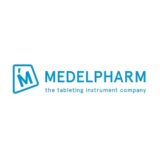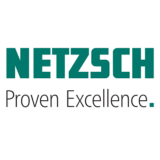White Papers
A selection of Whitepapers covering a variety of topics which have been kindly supplied by Making Pharmaceuticals Exhibitors and other pharmaceutical experts, to benefit the wider pharmaceutical industry.
Please select the month of content that you wish to view.
If you would like to supply a paper for this page, please contact melsands@step-exhibitions.com
Dry Granulation – A material sparing method.
In this paper Bruno Villa, General Manager at Medelpharm, explains benefits of dry granulation and principles of hybrid modeling with a STYL’One Evolution tableting press.
L-HPC (Low-Substituted Hydroxypropyl Cellulose) to formulate solid dosage forms with good stability.
L-HPC is a dual functional excipient which has disintegrant properties binder capabilities. and also has good but also a binder due to its excellent compressibility. The key benefits is that L-HPC is a non-ionic disintegrant which is less reactive to API’s. It also has anti capping effect when using very elastic API’s.
galeneIQ™ The bulk filler-binder that makes medicine taste better.
Isomalt is disaccharide alcohol derived from natural beet sucrose. It can be used in a wide-range of solid dosage forms such as direct-compression tablets, chewables, effervescents, powder sachets and high-boiled lozenges.
Back-Flow Contamination Of Flow Control Devices : Experimental Assessment Of Impact Upon Accuracy
Mass Flow Controllers are an essential control unit within Bioreactors where fragile cells depend on proper flow of oxygen for metabolism and carbon dioxide for pH control. Unfortunately, in the real world, not everything goes to plan and sometimes pressure imbalances occur and back-flow is created. In these cases it is essential for the MFC’s to be robust and remain unaffected by contamination. This paper sets out the experimentation upon Alicat Mass Flow Controllers to test their resilience to such contamination.
Higher Specifications Simplify System Design
The high turn-down (10,000 : 1) of Alicat Mass Flow Controllers allow the systems engineer to simplify the design, reduce the number of instruments required and reduce costs.
Product Datasheets Do Not Tell The Whole Story
A comparison of Mass Flow Meters from various manufacturers based upon their published data. As this data relates to only calibration conditions further experimentation was undertaken to identify actual performance during more normal, day-to-day conditions.
Content uniformity of pharmaceutical solid dosage forms using Vis-NIR spectroscopy examplified on cefixime tablets
This Application Note demonstrates different application possibilities of Metrohm Vis-NIR analysers for the determination of content uniformity parameters in pharmaceutical products such as tablets. This unique analytical technique enables significant cost and time savings compared to standard reference analysis.
Following the progress of pharmaceutical mixing studies using near-infrared spectroscopy
Well-mixed active substances for medications are indispensable in the pharmaceutical industry. This applies not only to the pharmaceutical active ingredient but also for lubricants, binding agents, explosives, oxidants and dyes. Analysis of these active ingredients is expensive; they are also only rarely analysed as a rule. The progress of the mixing procedures can be followed conveniently with NIR spectroscopy, on the one hand using visual comparisons and on the other by means of spectral algorithms. The progress of mixing processes can be predicted in real time with the help of the spectrum when the latter is used.
Near-infrared spectroscopy for monitoring a single-pot granulator
This Application Note describes the utilization possibilities of a new sensor design that permits, in combination with an NIRS XDS Process Analyser, the determination of solvent residues in a High-Shear Granulator during the drying phase. This system configuration reduces the scattering of the density distribution of the powder samples so that it is possible, directly in the process, to model the water and solvent content precisely.
Investing in Automated Visual Inspection and Sorting Machines: Costs, Risks and Performance Evaluation
Nowadays pharmaceutical companies are increasingly investing into automated visual inspection and sorting machines in order to replace subjective and manual sorting. Apart from the fact that the technology itself sometimes can be hard to understand, it also represents an important investment that needs to be thought through thoroughly. The latter supports the fact that when buying such a solution, one needs to approach the purchasing process thinking about all the risks, costs and performances of the machine. The document represents an objective overview on how to choose an optimal inspection equipment, pointing out the importance of »try before you buy« mindset in the decision process.
EU GMP Annex 1: The New Draft and the Implications for Sterile Products Manufacturing
EU GMP Annex 1 is the primary document governing the manufacture, control and release of sterile pharmaceutical products (both terminally sterilised and aseptically filled medicines). The Annex will shortly undergo a comprehensive update, as signalled by a new draft issued in February 2020. This white paper assesses many of the key points within the draft, focusing on those areas that have a direct impact upon sterile product manufacturing.
Can You Take The Hits and Bounce Back Stronger?
In this white paper, Martin Lush discusses three useful steps that can help companies thrive when the going gets tough.
Struggling Day to Day? Here Is Your Survival Tool Kit
In an effort to help inexperienced industry professionals, NSF International’s Martin Lush contacted 30 high caliber pharma veterans asked them: “What single piece of advice would you give the young and aspiring pharma professional that would help them survive and prosper?” This white paper reviews their answers, which represent nearly 1,000 years of combined pharma experience.
Biocompatible Wetted Materials For Mass Flow Instrumentation
BPE-2016 standards are often applied to mass flow meters and controllers regardless of their position relative to the sterile boundary. 316L stainless steel can be used for elements in the flow path, including flow bodies and laminar flow elements. Less frequently considered, but of greater potential concern, are the elastomeric components used in high performance mass flow instruments. This paper considers the selection of those elastomers.
Alicat Mass Flow Controllers’ Resistance to Backpressure Contamination
Mass Flow Controllers are an essential control unit within Bioreactors where fragile cells depend on proper flow of oxygen for metabolism and carbon dioxide for pH control. Unfortunately, in the real world, not everything goes to plan and sometimes pressure imbalances occur and back-flow is created. In these cases it is essential for the MFC’s to be robust and remain unaffected by contamination. This paper sets out the experimentation upon Alicat Mass Flow Controllers to test their resilience to such contamination.
Simplified Gas Line Configuration for Bioreactors and Bioprocess Systems
The high turn-down (10,000 : 1) of Alicat Mass Flow Controllers allow the systems engineer to simplify the design, reduce the number of instruments required and reduce costs.
Analysis of Temperature and Pressure Conditions on Flow Measurement
A comparison of Mass Flow Meters from various manufacturers based upon their published data. As this data relates to only calibration conditions further experimentation was undertaken to identify actual performance during more normal, day-to-day conditions.
Conical Milling: How to effectively scale-up from lab to pilot to production
In many pharmaceutical processes, what works in the lab doesn’t always scale-up seamlessly into production; this is true in conical milling. Larger batches, different process conditions, and varying material characteristics can all create unforeseen problems that ultimately impact performance. This white paper will aim to help you scale-up with minimum disruption or deviation. While there is no silver bullet, identifying potential pitfalls while understanding best practice can at least provide a logical road map for achieving milling success.
Evaluating the Rheological Properties of Hyaluronic Acid Hydrogels for Dermal Filler Applications
Hyaluronic acid (HA) is a naturally occurring polysaccharide frequently used as a functional ingredient in many topical and subcutaneous anti-ageing treatments such as dermal fillers, which exploit the polymer’s unique viscoelastic properties for effective soft tissue augmentation. When administered subcutaneously, HA builds an elastic network within wrinkles and rhytides to give the skin a plumper and fuller look.
Characterizing Opthalmic Viscosurgical Devices (OVDs) Using a Rotational Rheometer
Ophthalmic Viscosurgical Devices (OVDs) are viscoelastic solutions or gels used to protect the corneal endothelium from mechanical trauma and to maintain intraocular space during eye surgery. They usually contain one or more of the following components; hyaluronic acid or its sodium salt, chondroitin sulfate or methylcellulose.
A best practice approach to handling waste powder from OSD manufacturing
The loss of active pharmaceutical ingredients (APIs) during oral solid dosage (OSD) production is inevitable. Managing material loss is vital for reasons of safety, regulatory compliance, and cost. This white paper will discuss how pharmaceutical manufacturers have historically managed dust generated during the production process historically and explain why cyclone technology is able to revolutionise the process.

















































